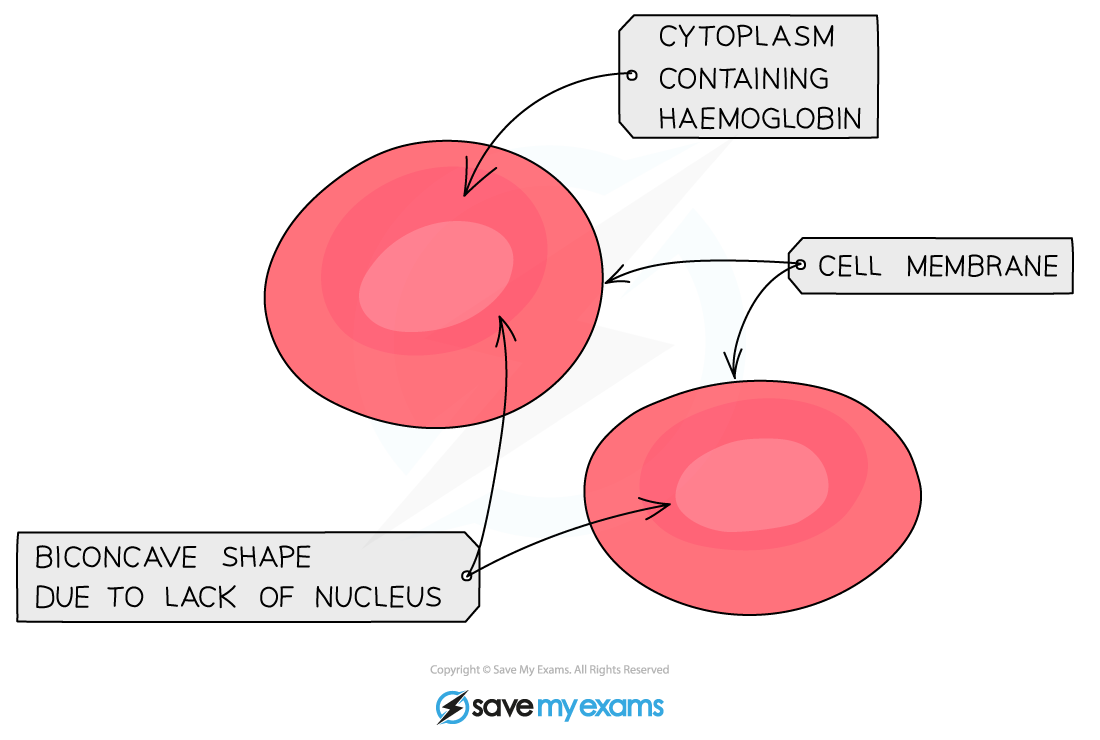- 翰林提供学术活动、国际课程、科研项目一站式留学背景提升服务!
- 400 888 0080
Edexcel IGCSE Biology 复习笔记 2.8.6 Human Transport Systems: Red Blood Cells & Plasma
Edexcel IGCSE Biology 复习笔记 2.8.6 Human Transport Systems: Red Blood Cells & Plasma
Red Blood Cells
- Red blood cells are specialised cells which carry oxygen to respiring cells
- They are adapted for this function in 3 key ways
- They are full of haemoglobin, a protein that binds to oxygen to form oxyhaemoglobin
- They have no nucleus which allows more space for haemoglobin to be packed in
- The shape of a red blood cell is described as being a 'biconcave disk' this shape gives them a large surface area to volume ratio to maximise diffusion of oxygen in and out

Red blood cells
Plasma
- Plasma is a straw coloured liquid which the other components of the blood are suspended within
- Plasma is important for the transport of many substances including:
- Carbon dioxide - the waste product of respiration, dissolved in the plasma as hydrogencarbonate ions and transported from respiring cells to the lungs
- Digested food and mineral ions - dissolved particles absorbed from the small intestine and delivered to requiring cells around the body
- Urea - the waste substance produced in the breakdown of proteins by the liver. Urea is dissolved in the plasma and transported to the kidneys
- Hormones - chemical messengers released into the blood from the endocrine organs (glands) and delivered to target tissues/organs of the body
- Heat energy - created in respiration (an exothermic reaction), heat energy is transferred to cooler parts of the body or to the skin where heat can be lost
转载自savemyexam

最新发布
© 2025. All Rights Reserved. 沪ICP备2023009024号-1









